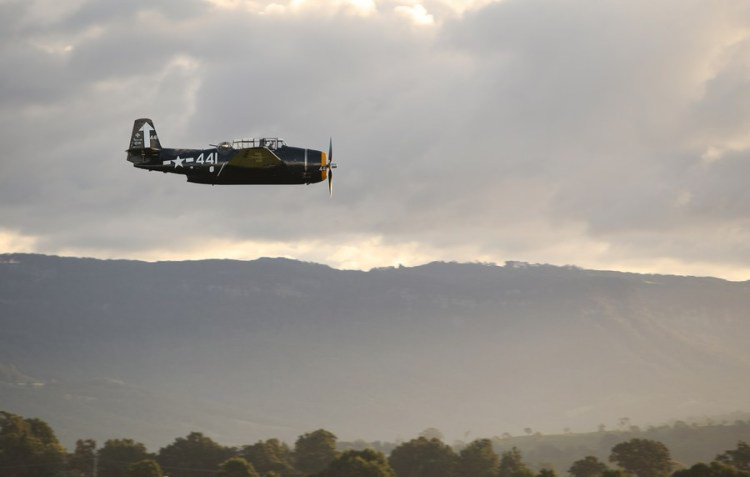
A woman rides a bike near Sydney Opera House in Sydney, Australia, August 4, 2021. /Xinhua
A woman rides a bike near Sydney Opera House in Sydney, Australia, August 4, 2021. /Xinhua
Editor's note: Daryl Guppy is an international financial technical analysis expert. He has provided weekly Shanghai Index analysis for mainland Chinese media for more than a decade. Guppy appears regularly on CNBC Asia and is known as "The Chart Man." He is a former national board member of the Australia China Business Council. The article reflects the author's opinions and not necessarily the views of CGTN.
"Landmark defense review to make long-range strike weapons a priority," an Australian media headline sums up the strategic change. It's a change based around an untested assumption that Australia will be attacked by another country. It's an assumption that has been assiduously promoted by Australian media for several years and repeated so often that it has achieved the status of fact.
There are two key messages amongst the detail of the review, and they will alarm countries in the Association of Southeast Asian Nations (ASEAN) region. The first message summarized by Australian Minister for Defense Richard Marles is the idea of "impactful projection." Stripped of its bureaucratic jargon, this means Australia engaging in conflict well beyond its shores, bringing death and destruction to other countries.
It's a strategy not far removed from the outdated and discredited domino theory that prevailed in the 1960s and which led Australia into the American war in Vietnam. Key to the modern implementation of this theory is the acquisition of long-range weapons designed to inflict damage far from Australian shores. The AUKUS submarine purchase is part of this strategy.
Asia has already seen the impacts of proxy wars fought in Malaysia, Cambodia, Laos, Vietnam, Borneo and parts of Indonesia. These were conflicts of European and American origin fought in foreign fields. They inflicted generational damage on the ASEAN countries and the memory of this impact has not disappeared.
For the West, the Ukraine conflict is about opposing Russia. For the ASEAN and others, it's a vicious reminder of the West's preference for supporting proxy conflicts, and that is a significant concern when they come to consider Western activity in the ASEAN region.
The first message sent by the Australian defense review will not be enthusiastically embraced by the ASEAN and it makes the projection of Australian soft diplomatic power even more difficult.
Australia prefers to conduct a war in the ASEAN's backyard, so why should Australia's desires in regional forums such as the Regional Comprehensive Economic Partnership (RCEP) be given priority when the interests of regional players are so egregiously ignored? Australian Minister for Foreign Affairs Penny Wong's diplomatic tasks have become immeasurably more difficult.

An airplane performs during Wings over Illawarra Airshow at Illawarra airport, about 100 km south of Sydney, Australia, on May 5, 2019. /Xinhua
An airplane performs during Wings over Illawarra Airshow at Illawarra airport, about 100 km south of Sydney, Australia, on May 5, 2019. /Xinhua
The second key, but implied, message also comes as no surprise as the groundwork was laid in the 2014 Force Posture Agreement. This is the effective integration of Australian military forces as a de-facto component of the U.S. military. This goes beyond the use of common standard in the North Atlantic Treaty Organization (NATO) and U.S. equipment. It goes beyond the cooperation exercises in Pitch Black and U.S. force rotations through the Northern Territory.
Richard Marles talks of seamless integration within the U.S. military structure. Indeed, the access to U.S. military secrets and command and control processes involved in the AUKUS submarine project demand this higher level of integration. At the same time, he denies this involves any loss of Australian sovereignty when it comes to decision making.
The 2014 Force Posture Agreement states that U.S. material and facilities based in Australia are for the exclusive use of U.S. forces which have exclusive control over, access to, and the use of such material. This integration severely limits Australia's ability to make independent and divergent decisions around the deployment of troops and involvement in conflict. The defense review takes this acquiescence further, effectively placing Australian armed forces under the de-facto authority of American forces, whilst remaining nominally under Australian command.
It is an irony that the review is released on the eve of Australia's annual Anzac Day war service commemoration. The disaster of the British-planned Anzac campaign at Gallipoli led subsequent Australian governments to refuse to allow Australian troops to ever again fall under foreign command. Now the wheel has completed a full turn, with the level of force integration effectively dragging Australia into conflicts initiated and commanded by others.
It is this integrated relationship that also concerns the ASEAN countries because it diminishes the weight of an ASEAN counterbalance to the increasing Western interference in the region. There was a brief time when Australian diplomacy did not ape the UK or American interests as Australia identified itself more with Asia. The Asia-Pacific Economic Cooperation agreements were the highlight achievement and ASEAN felt Australia was aligned with regional, rather than Western objectives.
The defense review stamps a definitive end to that period. The review marks a retreat from the ASEAN region and significantly diminishes the role Australian diplomacy can play in anything other than on the margins of day-to-day matters.
Despite its emphasis on long-range offensive weapons and capabilities, Australia sees this review as a defensive strategy. Those in the ASEAN region will beg to differ.
(If you want to contribute and have specific expertise, please contact us at opinions@cgtn.com. Follow @thouse_opinions on Twitter to discover the latest commentaries in the CGTN Opinion Section.)